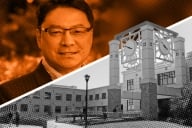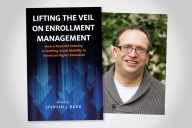You have /5 articles left.
Sign up for a free account or log in.
Nine out of every 10 students who apply to Princeton University are rejected, and many of them are students with the kinds of records that just about assure they will end up getting a great education somewhere. Jian Li, who despite his top grades and perfect SAT scores was one of this year's rejects, ended up at Yale University. But he has set off a federal investigation of whether Princeton's affirmative action policies discriminate against Asian American applicants.
Since he was rejected -- after first being put on the waiting list -- Li filed two complaints with the U.S. Education Department's Office for Civil Rights. OCR initially found insufficient evidence to proceed, but agreed to an inquiry after Li refiled his complaint with additional information. His complaints were first reported this weekend by The Wall Street Journal.
By most measures, the odds are against Li winning his claim -- and Princeton denies that any bias took place. Demonstrating discrimination is particularly difficult at elite private universities, where thousands of exceptionally qualified students of all races and ethnicities are rejected every year and there is no explicit formula to determine admission. But Li's complaint comes at a time that many Asian applicants and the high school counselors who work with them report a view that they are held to a higher standard than are white, black or Latino students. And he is citing research by the university's own professors to document the impact of affirmative action on Asian applications.
Li did not respond to messages seeking comment, but his complaint states that he received 800s on the mathematics, critical reading and writing parts of the SAT, that he graduated in the top 1 percent of his high school class, that he completed nine Advanced Placement classes by the time he graduated, and that he had been active in extracurricular activities as well -- serving as a delegate at Boys State, working in Costa Rica, etc.
The problem, Li said, was his Chinese background. Li said that he left ethnicity blank on his application. But while Princeton's application indicates that question is optional, it doesn't list as optional other questions that Li answered: his name, his mother's and father's names, his first language (Chinese), and the language spoken in his home (Chinese). Li said that this information made his ethnicity "unequivocally" clear to Princeton.
Even if Li was a strong applicant and Princeton knew he was Chinese, that doesn't demonstrate discrimination. To try to do so, Li is pointing to research done by two Princeton scholars and published in Social Science Quarterly. The research looked at admissions decisions at elite colleges and found that without affirmative action, the acceptance rate for African American candidates would be likely to fall by nearly two-thirds, from 33.7 percent to 12.2 percent, while the acceptance rate for Hispanic applicants probably would be cut in half, from 26.8 percent to 12.9 percent.
While white admit rates would stay steady, Asian students would be big winners under such a system. Their admission rate in a race-neutral system would go to 23.4 percent, from 17.6 percent. And their share of a class of admitted students would rise to 31.5 percent, from 23.7 percent.
Cass Cliatt, a spokeswoman for Princeton, said that while the study was done by scholars at the university, the study examined elite colleges as a whole, not Princeton.
Last year, she said, Princeton rejected about half of all the applicants who had perfect SAT scores -- and in doing so rejected people of a range of ethnicities. "Princeton doesn't discriminate against Asian Americans," she said.
Princeton does use affirmative action to recruit a diverse class, Cliatt said, but it does so through individual reviews of applications, not with separate policies for students from different racial and ethnic groups. "You can't say someone was or wasn't admitted because of some formula," she said.
In Princeton's freshman class, there are 172 Asian Americans -- more than any other minority group -- out of 1,231 students.
What Princeton does not release is the sort of information used by its own scholars on admit rates by specific ethnic and racial groups. Princeton does publish data periodically on the admit rates of all minority applicants (showing an admit rate only marginally higher than for all applicants), but does not break out rates for different groups. Cliatt said that to date, there has not been much interest in those figures, but that Princeton might reconsider -- if there is more interest and it appears that releasing those numbers would be "in the public interest." So far, she said, "the public hasn't told us they want the breakdown."
Critics of affirmative action -- eager to build on their successful effort in Michigan, where voters barred affirmative action at public colleges last week -- are anxious to get such data. Private colleges do not need to release such data, but if the Education Department obtains statistics during its investigation and cites them in its analysis of the case, the information could become public.
When such statistics have been released in the past, they have tended to come from public institutions, which must respond to open records requests, and the data at highly competitive publics have indicated large disparities in the test scores and grades, on average, of black and Latino applicants on one hand and white and Asian applicants on the other.
In the weeks before the Michigan vote, the Center for Equal Opportunity -- a group opposed to affirmative action -- released data on the University of Michigan showing that the SAT median for black students admitted to Michigan’s main undergraduate college was 1160 in 2005, compared to 1260 for Hispanics, 1350 for whites and 1400 for Asians. High school grade point averages were 3.4 for black applicants, 3.6 for Hispanics, 3.8 for Asians, and 3.9 for whites. Michigan officials argued that the figures distorted the reality of admissions procedures, which look beyond numbers. But the figures were much discussed in Michigan and similar figures -- when released on other state universities -- have been part of campaigns against affirmative action.
At Princeton, Asian students who went to his high school aren't impressed with Li's complaint. Several noted that many Asian students from the high school have been admitted or are enrolled. One of them told The Daily Princetonian that his complaint was "completely unwarranted."








